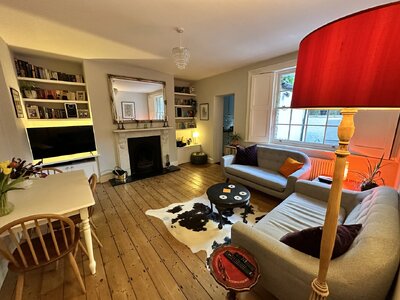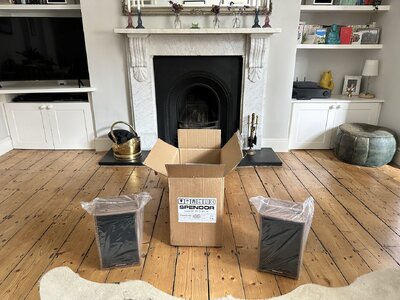I appreciate you are in the trade so you have a wealth of experience very few of us can match. But I find it strange you are dismissing one rear ported speaker yet recommending other rear ported speakers, and even recommending them over a front ported or sealed box design?
The OP's speaker placement option is far from ideal but in the end needs must. He seems happy with his current speaker placement, which is worse, so any improvement on this must surely be a winner.
I can only speak from experience. I don't understand it either, but some (very few) rear ported speakers seem to work ok against a wall. I can only put that down to the port design, where some may not expel air as violently as others (which is why slot ports work better), and the Ophidians for example, but that's more of a vent than a port anyway, hence my recommendation for those.
Maybe it's a little bit room dependent, but in the OP's case, he's placing a speaker into what is essentially a closed in space where sound will collect. Will the rear ported Amphion Argon 0 work in that particular situation? I really can't say, but given my experience of them in various situations, I think they'll work better than almost any other rear ported speaker - the larger Argon 1, which has a noticeable increase in bass output, has also been used successfully against walls. I've previously dealt with B&W speakers since around 1995 up to a couple of years ago. They're not wall friendly, very few mainstream brands are.
I honestly don't know why speaker manufacturers aren't making more room friendly loudspeakers nowadays. People don't want to give up living room real estate for a large pair of speakers, even if they can. I dare say most unsuitable speakers are actually purchased and just shoved near a wall because that's where they've got to go, with little thought of how they'll end up sounding. I'm convinced that part of the "sounds better in the dealer's showroom" is the fact that in a dealer demo room, they'll place them where they need to be placed to sound good, which will likely be in a completely different place to where the listener will have them at home. A room is a room, they've all got issues, unless the dealer showroom has had some physical treatment applied.
I know this might be against the rules, and if it is, please remove this paragraph, but I think it's relevant. Has anyone ever known a dealer try to recreate the listener's space? Go to ANY dealer and you'll have a demo room with the speakers perfectly set up, sofa in the best place, all in a perfect triangle. Not everyone has their speakers in the perfect place, and maybe not even the listening seat/sofa. I had a young couple who had a small apartment nearby wanting a CD/amp/speakers to replace their PC speakers they were using for their Rega turntable. They sent me a photo of the slightly odd shaped room, and their sofa was on a side wall compared to where the system was, so listening was off axis by about 40 degrees. The speakers were on top of a small wooden unit with a TV next to them, and they couldn't be too big as they would then start obscuring the TV screen. Lots of limiting factors. Before they came in, I placed my sofa at the same placement to the system as Was in his photo, and because there was a wall fairly close to the far speaker just the other side of the small TV, I placed some IKEA furniture tops I had from some unassembled furniture in order to recreate a major reflection point in their room (I had no demo room at that point). After listening to a few suitable speakers, they chose the Argon 0, as its waveguide helped fill the room better, particularly at their listening position, and also reduced HF reflections off the wall I'd created, and the bass wasn't booming even though they were placed right up against the wall. They ordered the system, and while they were waiting, I loaned them the system to try out at home, just to ease their minds that the system would sound like that. They love the system. Could've been quite a different story had they just gone to listen to a bunch of stuff that had been set up in the usual way in the average demo room.
I guess the point of that was that the reason things sound better at a dealer isn't necessarily because dealers have better rooms - they're just rooms, they're not purpose built - it's because the systems are set up properly, and the speakers are most likely set up away from the wall where they sound best too. Put the system against another wall and it won't sound as good.



